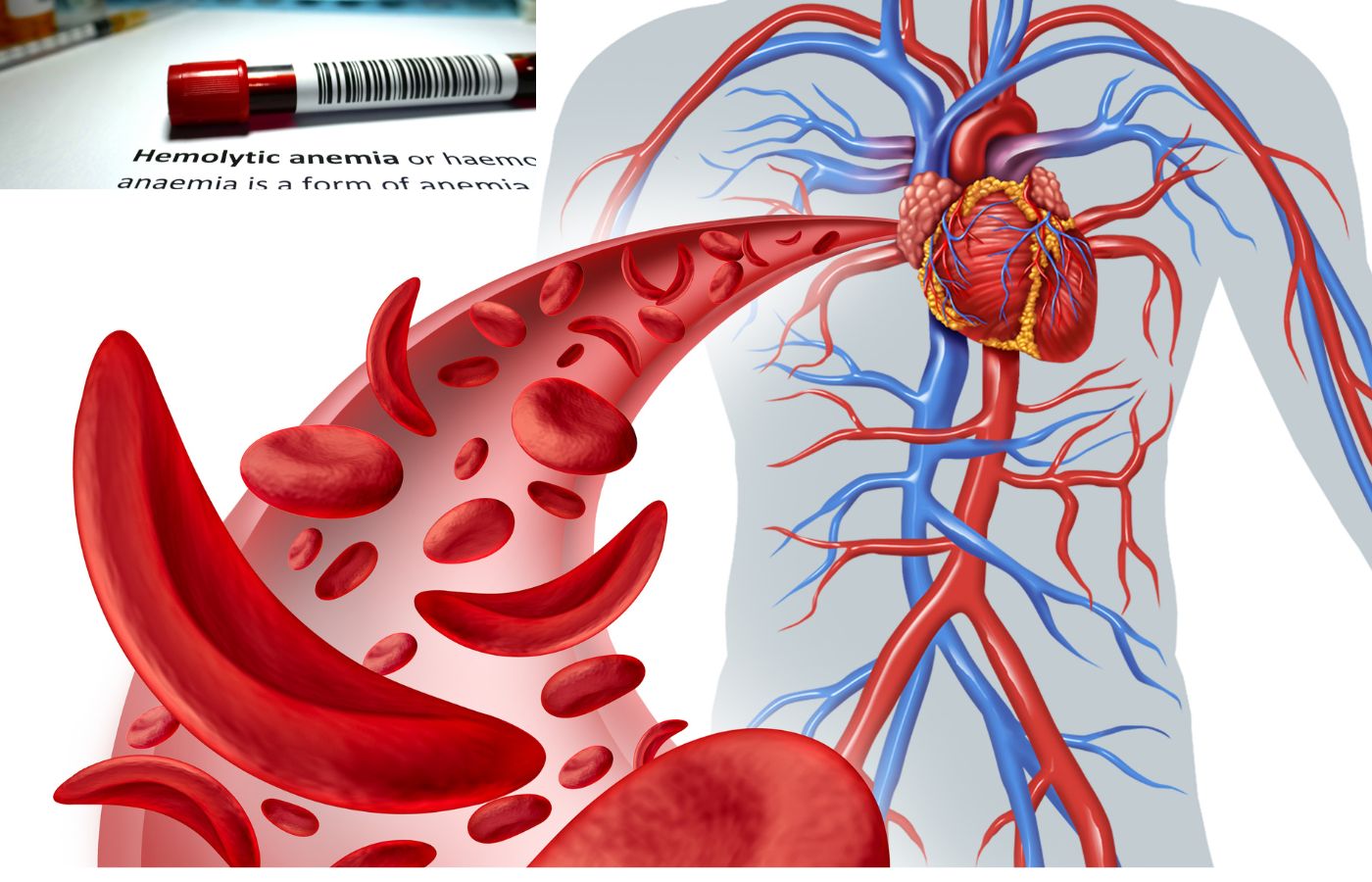Hemolytic anemia occurs when red blood cells are destroyed faster than the body can replace them. Learn about its causes, common symptoms like fatigue and pallor, and diagnostic blood tests for accurate diagnosis.
Hemolytic anemia can develop due to a variety of factors, including inherited disorders, infections, and autoimmune diseases. In this blog, we will explore the causes, symptoms, and diagnosis of hemolytic anemia, focusing on the importance of blood tests in identifying the condition.
What is Hemolytic Anemia?
Hemolytic anemia is a type of anemia caused by the premature destruction of red blood cells. Normally, red blood cells live for about 120 days before being removed from circulation by the spleen. However, in hemolytic anemia, red blood cells are destroyed at an accelerated rate, leading to a shortage of these cells in the bloodstream. The body may try to compensate by increasing the production of red blood cells in the bone marrow, but it may not always be able to keep up with the destruction.
Causes of Hemolytic Anemia
There are numerous hemolytic anemia causes, which can be categorized into inherited and acquired conditions.
1.Autoimmune Disorders: The immune system attacks and destroys its own red blood cells, leading to autoimmune hemolytic anemia.
2.Inherited Conditions:
- Sickle Cell Disease: Abnormal hemoglobin causes red blood cells to break down prematurely.
- Thalassemia: Abnormal hemoglobin production leads to red blood cell destruction.
- Hereditary Spherocytosis: Red blood cells become spherical, making them more fragile and prone to destruction.
- G6PD Deficiency: Deficiency in an enzyme that protects red blood cells from oxidative stress, leading to their destruction.
3.Infections: Certain infections like malaria or babesiosis can infect and destroy red blood cells.
4.Medications: Some drugs, including certain antibiotics, can trigger hemolysis by damaging red blood cells.
5.Mechanical Hemolysis: Physical damage to red blood cells from artificial heart valves or other medical devices.
6.Toxins and Chemicals: Exposure to certain toxins or chemicals can cause red blood cells to break down.
These are the primary causes of hemolytic anemia, which lead to the premature destruction of red blood cells in the body.
Symptoms of Hemolytic Anemia
The symptoms of hemolytic anemia vary depending on the severity and the underlying cause. Common symptoms include:
FatiguePaleness
Jaundice
Dark Urine
Shortness of Breath
Chest Pain
Diagnosing Hemolytic Anemia
The diagnosis of hemolytic anemia involves a combination of medical history, physical examination, and several blood tests . A doctor will typically begin by assessing the patient's symptoms and medical history, including any family history of anemia or related conditions.
Blood Tests for Hemolytic Anemia
Several blood tests are used to diagnose hemolytic anemia, determine the cause, and assess the severity of the condition. These include:
- Complete Blood Count (CBC): A CBC is the first test used to assess anemia. It measures the number of red blood cells, hemoglobin levels, and the size and shape of the red blood cells. A lower-than-normal red blood cell count and hemoglobin level can indicate anemia.
- Reticulocyte Count: This test measures the number of reticulocytes (immature red blood cells) in the bloodstream. A high reticulocyte count often indicates that the bone marrow is producing more red blood cells to compensate for their increased destruction.
- Direct Coombs Test (Direct Antiglobulin Test): This test is used to detect autoimmune hemolytic anemia. It checks for antibodies that may be attached to red blood cells, marking them for destruction by the immune system.
- Bilirubin Levels: The breakdown of red blood cells produces bilirubin, a substance that can accumulate in the body and cause jaundice. High levels of bilirubin can suggest that red blood cells are being destroyed faster than usual.
- Blood Smear: A blood smear allows doctors to examine the shape, size, and appearance of red blood cells. It can help identify certain types of hemolytic anemia, such as sickle cell disease or hereditary spherocytosis.
- Haptoglobin Levels: Haptoglobin is a protein that binds to free hemoglobin released from destroyed red blood cells. Low levels of haptoglobin can indicate hemolysis.
- Lactate Dehydrogenase (LDH): LDH is an enzyme released when red blood cells break down. Elevated levels of LDH can be a sign of hemolysis.
- Bone Marrow Examination: In some cases, if the cause of hemolytic anemia is unclear, a bone marrow biopsy may be performed to assess the production of red blood cells.
The Role of Blood Tests in Hemolytic Anemia Diagnosis
Blood tests are essential in diagnosing hemolytic anemia because they help measure the extent of red blood cell destruction and the body’s response to it. For example, a low red blood cell count, elevated reticulocyte count, and high bilirubin levels are key indicators of hemolytic anemia. Moreover, tests like the direct Coombs test can help identify whether the cause is autoimmune-related.
Conclusion
Timely diagnosis through blood tests is critical in identifying hemolytic anemia and determining its cause. With the right treatment and management, individuals with hemolytic anemia can lead healthy lives. If you experience symptoms of anemia or suspect that you may have hemolytic anemia, it is essential to consult a healthcare professional and undergo the necessary blood tests for an accurate diagnosis and appropriate treatment.
